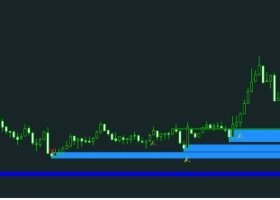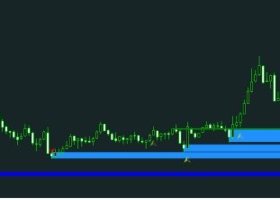
Gold Firm; Weaker Dollar, Inflation Jitters or Both? - Analysts
Gold looked poised to break higher Thursday, with the precious metal expected to soon revisit the 2016 highs near $1,263.50 per ounce, seen Feb. 11.
If that level gives way, and gold begins to rise towards 12-month highs near $1,300, it will likely be because the dollar is again on the defensive, analysts said.
But, with various U.S. inflation indicators, such as CPI and final demand PPI, showing more gusto recently, there is also concern that inflation may finally be rising.
This makes the average hourly earnings component of Friday's U.S. employment data for February very important - for Federal Reserve policy and for gold, they said.
MNI's Claudia Hirsch, in her latest Reality Check on the U.S. jobs situation, said recruiters saw hiring activity as "brisk."
"Staffing professionals told MNI that skills shortages helped drive February's brisk private-sector job-placement pace, and also nudged pay upward. Reports of faster wage growth are mounting, but gains remain moderate," Hirsch wrote. See MNI Main Wire story at 1:34 a.m. ET.
MNI's median estimate for average hourly earnings is +0.2%, with a range of flat to +0.3%. As a reminder, January average hourly earnings were +0.5%, well above market expectations.
Any sign of a larger uptick in wages would likely push U.S. Treasury yields higher as the market rethinks its view about the number of Fed rate hikes in 2016.
Rising U.S. yields would likely support the dollar, which in turn, would generally tend to weigh on gold and other commodity prices.
However, traders have begun to wonder if this time may be different and whether signs of budding inflation may instead sent gold prices flying higher.
Spot gold holds at $1,260.15 per ounce Thursday afternoon, on the high side of a $1,237.54 to $1,260.26 range.
Gold has taken out last week's high of $1,253.39, with an eye now on the Feb. 11 peak at $1,263.48, which was the highest level since Feb. 6, 2015 when prices peaked near $1,269.00.
As risk aversion diminished last month, gold was sold, with prices bottoming near $1,191.02 Feb. 16 and $1,195.83 Feb. 17.
Gold saw similar choppy trading action in the past week or so, bottoming at $1,202.05 Feb. 22 then topping out two day's later near $1253.39 before retreating ahead of last weekend.
This volatile trading action has continued this week. Up until today however, the metal has been making both lower highs and higher lows, indicative of a breakout.
Thursday's trading action would suggest that gold's topside is more vulnerable now.
Other February peaks from last year, now potential topside targets, include $1,274.18, from Feb. 5 and $1,285.23 from Feb. 3. The 2015 high was $1,307.62, seen Jan. 22.
Gold demand has been solid and steady since the start of 2016.
"Year-to-date, we have seen a massive increase in gold," said Christopher Louney, commodity strategist at RBC Capital Markets.
"Together, gold ETP holdings and CFTC net long positioning have moved in near lock - step with prices as gold has leaped from closer to $1,050/oz at the beginning of the year up to the $1,250/oz range more recently - impressively with in the span of just months," he said.
Year-to-date gold data for CFTC positioning and ETF flows looks impressive, but the totals appear less solid when compared to prior years numbers.
"While there has been the aforementioned uptick in holdings year-to-date in 2016, what we must keep in mind is just how far those holdings plummeted - from a peak of $183.5 billion in November 2012 to $86.8 billion currently - losing nearly $100 billion (or 53%) of AUM in just over three years and change," Louney said.
The recent uptick in global investor demand will need be sustained "in order to be a true game-changer for gold or the precious metals complex as a whole, in our view," he said.
Societe Generale Cross Asset Research strategists viewed the latest run-up in gold as "a selling opportunity," and this week they entered into a short gold position.
"The gold price appears to be discounting no further Fed rate hikes this year and very little tightening next year," they said.
"We expect the U.S. economy to withstand the slowdown in emerging markets and this should over time cause the market to price in a moderate pace of Fed tightening," the strategists said.
SGCAR viewed gold as overvalued by about 6% at current levels.
In terms of inflation concerns, Capital Economic economist John Higgins noted that "the real yields of U.S. Treasury Inflation Protected Securities (TIPS) have fallen since the U.S. stock market hit a trough on 11th February."
"The likely explanation is that investors have become more worried about the prospects for inflation in light of the strength of the growth in wages and 'core' consumer prices in January, as well as the recovery in oil and other commodities markets," he said.
Inflation jitters "would also explain why the price of gold has held up well despite other headwinds," Higgins said.
Capital Economics has a end-of 2016 forecast of $1,250, not far from current levels.
Their commodity analysts stressed that, aside from Fed expectations, "a new factor will also be increasingly important, namely the return of inflation."
Copyright © 2016 MNI
PS: Copy signals, Trade and Earn on Forex4you - https://www.share4you.com/en/?affid=0fd9105


